Tire Size Explained: Clarifying the Confusion
You’d think finding the right trailer tire sizes and the right ATV tire sizes, or tires for your forklift, ag equipment, lawn & garden equipment and more would be quick and easy, wouldn’t you? The truth is, tire measurements aren’t standard across different types of specialty application equipment, which can make finding the right size tires confusing. Then there’s the facts that some tire sizes are expressed in inches, some in millimeters, and some in both inches and millimeters, and that naming conventions have changed over the years so one tire size may be expressed two ways. That’s why the tire experts at Treadworld want to take some of the mystery out of getting tire size explained. The following information will help you make easy work of choosing the right size tires.
Not surprisingly, the tire size you need is in large part going to be determined by the size of the wheel rim you’ll be installing it on, for any type of equipment. But it’s not really that easy.
Generally, tire sizes are listed on the sidewall. This is true for RubberMaster trailer tires and Master ATV tires and Master UTV tires, for example. But even then, it’s not as easy as knowing the size of your rim and finding that size on the tire’s sidewall, though that’s a good place to start. Rather you need to interpret the numbers you see there.
Trailer Tire Sizes
You’ll find trailer tire sizes are generally broken into main groups of 12 inches and smaller, and 13 inches and larger. The sizes for smaller trailer tires are generally denoted by two numbers, for instance 4.80-12 or 5.70-8. The first number in these examples is the section width of the tire, which is a measurement of the distance from the widest point of a tire’s outer sidewall to the widest point of its inner sidewall, 4.80 inches and 5.70 inches, respectively. The second number is the diameter of the wheel rim the tire mounts on, in these examples 12 inches and 8 inches.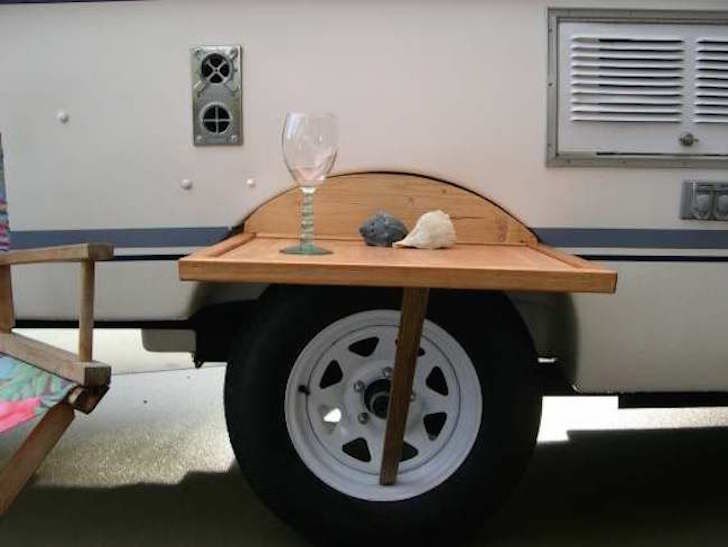
Larger trailer tire sizes are denoted by three numbers, for instance a common tire size is 16.5×6.50-8. It’s a more straightforward process when the measurements, as in this case, are reflected in inches. The 16.5 is the approximate height of the tire, and the last number, 8, indicates the diameter of the wheel rim. The third number, the one in the middle, in this case 6.50, represents the height of the sidewall (measured from wheel rim to top of the tread).
This measurement gets more complicated with tires where the sizes are in denoted by millimeters instead of inches because in that case, the third number is referred to as the aspect ratio, the sidewall height divided by the tire width, expressed as a percentage. The higher the aspect ratio number, the wider the tire’s sidewall, or profile, as it’s sometimes called. So, for tire size ST235/85R16 (the ST indicates it’s a Special Trailer tire that should only be used on trailers, and the R means it’s a radial tire), the 235 indicates the tire has 235 millimeters section width, the 16 tells us the wheel rim diameter is 16 inches, and the aspect ratio is 85%, meaning the height of the sidewall is 85% as tall as the tire is wide.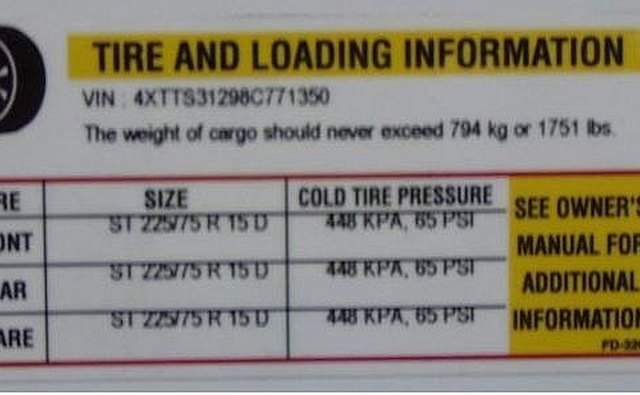
ATV Tire and UTV Tire Sizes
With ATV and UTV tires sizes, the first number is the overall height of a mounted, inflated tire. The second number is the section width of the tire when inflated and the third number represents the diameter of the wheel rim. So, with an ATV tire sized at 20×10.00-9, the tire is 20 inches high, with a section width of 10 inches, and fits on a 9-inch wheel rim. When there is a dash between the second number and the third number, you’re looking at a bias tire. If, instead of a dash, you see the letter “R”, you’re looking at a radial tire.
Ag Tire Sizes
With agriculture tires, for example the size 11L-14, the 11 means the tire’s section width is 11 inches and the 14 represents a wheel rim diameter of 14 inches. The L indicates this is a low section height tire. When you see an extra number, for instance with wheelbarrow tires size 4.80/4.00, 4.80 is the section width of the tire, 4.00 is the section height of the tire, and 8 represents the wheel rim diameter. If you see the NHS label after the tire size, that notes the tire is not for Highway service.
If you see the NHS label after the tire size, that notes the tire is not for Highway service.
Forklift Tire Sizes
The most common forklift tires are pneumatic tires or made of solid rubber, with sizes denoted by two numbers. So, in the case of forklift tire size 6.50-10, the 6.50 represents the section width and the 10 represents the diameter of the wheel rim.
Skid Steer Tire Sizes
Skid steer tires are sized similarly to forklift tires, so a tire sized at 10-16.5 has a 10-inch section width and a 16.5-inch wheel rim diameter.
Treadworld Tire Sizes: We’re Here to Help You
When it comes to choosing the right high performance Treadworld tire sizes, we’re here to provide you with any help you need. You can use our 3-Step Tire Match tool on the home page, or you can contact our tire experts for help, either by email or live chat. Our RubberMaster tires and Master tires for both ATVs and UTVs are all manufactured using top quality rubber compounds, before being triple-tested for quality then X-rayed to be sure they’re perfect.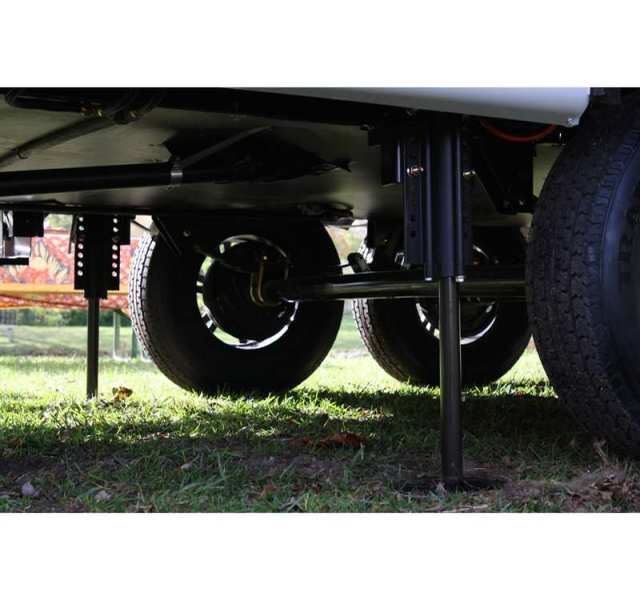 Every tire we sell is covered by our Ultimate Advantage Warranty. You can count on us to give you the quality, and the help, you need so you can get the best tires for you.
Every tire we sell is covered by our Ultimate Advantage Warranty. You can count on us to give you the quality, and the help, you need so you can get the best tires for you.
Maintaining trailer tires — whether they are ST (Special Trailer) or LT (Light Truck) — isn’t always the same as what you do for passenger vehicle tires. Here are some basics on getting the most out of your trailer tires.
Running your ST or LT trailer tires under-inflated is a sure way to quickly wear them out and invite tire failure. Keeping them at the proper air pressure is key for longevity, load-carrying capacity, and the ability for the tire to dissipate heat better.
The best way to tell if your tires are properly inflated is to check them with an air pressure gauge. In some cases, an under-inflated tire may not appear low. Trailer tires can look fully inflated and be below the safe air pressure.
Find the maximum tire pressure by looking at your tire sidewall. Look for the small notation “Max. Load” followed by a PSI number (80 in the example below).
Trailer tire pressure should always be checked when the tire is cold, ideally before being driven that day. Driving generates heat and heat generates pressure, which will throw off your measurement. Here’s how to do it yourself.
It’s really important not to overload trailer tires. Overloading tires can cause premature wear and increase the risk of tire failure.
The “Max. Load” information stamped on the sidewall indicates a tire’s load capacity when it’s inflated to the maximum PSI. In the example, this tire can handle a maximum 2,830 pounds when it’s inflated to 80 PSI and used in a “single” application: one tire on each side of the axle.
Note: Some trailer tires are also marked with a “Max. Load Dual” number.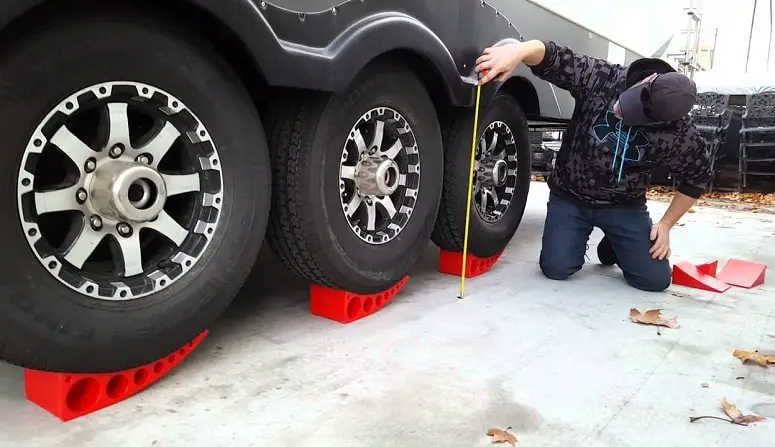 This comes into play when two tires are mounted on both sides of the axle (four trailer tires total per axle), a “dual” application, or dually, which is an unusual application. In the above example, each tire’s load capacity is reduced by 13 percent to 2,470 pounds when it’s used as a dually. This assures that if one of the dual tires fails, the remaining tires can keep the trailer stable until you come to a stop.
This comes into play when two tires are mounted on both sides of the axle (four trailer tires total per axle), a “dual” application, or dually, which is an unusual application. In the above example, each tire’s load capacity is reduced by 13 percent to 2,470 pounds when it’s used as a dually. This assures that if one of the dual tires fails, the remaining tires can keep the trailer stable until you come to a stop.
Be aware: If your tire pressure is lower than what’s recommended, the tire’s carrying capacity will be lower, too.
You just need to get tires that can support the trailer weight listed on the placard on your trailer or in your owner’s manual ... right?
Not quite. That weight figure doesn’t include all the cargo your trailer will be carrying. Get an actual weight by visiting a truck scale when you’re fully loaded, including full water and propane tanks.

Refer to the trailer placard or your owner’s manual. Either will tell you the manufacturer’s recommendation. (Trailers have a federal certification/VIN label generally located on the forward half of the driver’s side of the unit. Some trailers also have a separate vehicle placard located there that describes tire and loading information.)
Or you can look at the tire sidewall sizing information. Then be sure to check with a tire professional before you buy to make sure what you have in mind is the right fit for the loads you’re hauling and roads you’re traveling.
Travel trailer and boat trailer tires may sit for long stretches. This is a good reason to have your tires and bearings inspected every year by a tire professional.
Schedule an Appointment
Carrying a spare for your trailer may just save your day or vacation. Boat trailer and travel trailer tires are often specialty tires that aren’t always readily available in all places.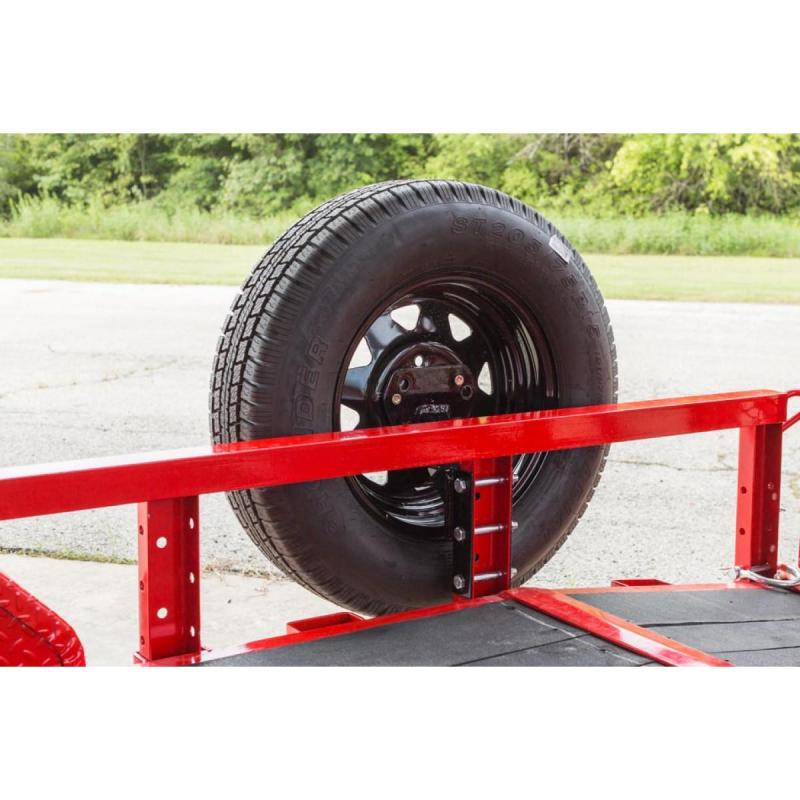
A spare tire means you’ll have an hour or so of hassle changing a tire if you get a flat, versus missing a day or more of vacation, or having to leave your trailer loaded with gear to go in search of an open tire shop.
Money-saving tip: When you replace your full set of trailer tires, consider keeping the one that’s in the best condition to use as a spare, so long as a tire professional inspects the tire and confirms it is suitable.
The trailer’s certification label or owner’s manual may give you advice on which type of tire construction is best. Some of your choice depends on the type of trailer you have and the kind of travel you’re doing.
Radial tires run cooler so on longer trips they don’t wear as fast. They’re also less prone to developing flat spots when a trailer is parked in one place for weeks at a time.
Bias-ply tires have stiffer sidewalls, which can reduce trailer sway.
Whatever your choice, don’t mix-and-match tire types or sizes. Go with all radials or all bias tires of the same size.

Come on by your local Les Schwab Tires store and we’ll be glad to help.
For many motorists, the tire parameters indicated on the sidewalls are akin to the Stirlitz code in the Center - nothing is clear. But for the correct selection of wheels, you need to be able to read these designations and understand their meaning. Tire manufacturers' catalogs and online selections make life easier, but they are not without errors and do not contain all the information. To understand the automotive "shoes" and choose tires yourself, you will have to decipher their markings. Our cheat sheet is here to help.
Tire size code
As with choosing your own boots, the first step in choosing your tires is size.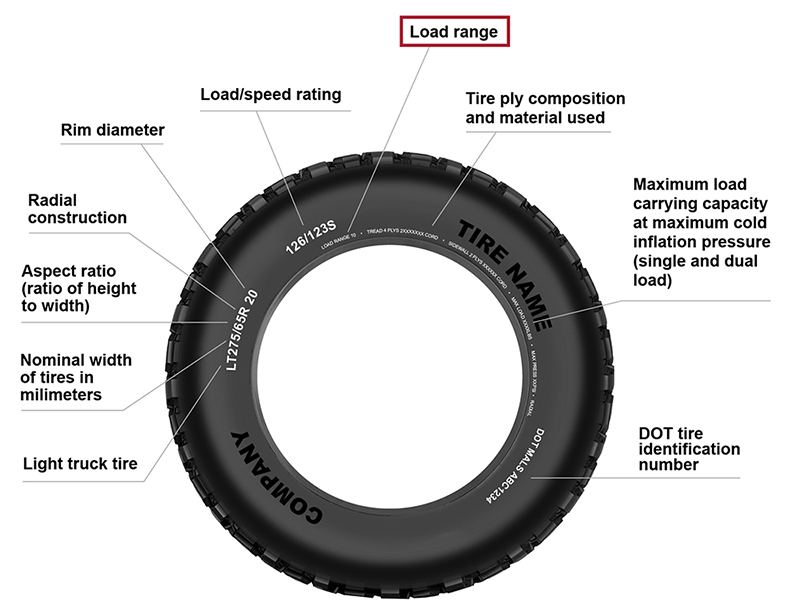 But if we know the exact size of the foot, then there may be several tire sizes recommended by the manufacturer. You can find them in the car manual or on the tire pressure sticker on the door pillar, in the Tire Size column.
But if we know the exact size of the foot, then there may be several tire sizes recommended by the manufacturer. You can find them in the car manual or on the tire pressure sticker on the door pillar, in the Tire Size column.
The format XXX / YY RZZ, familiar to most drivers and the most common in the world (where XXX is the tire width, YY is the profile height, ZZ is the rim diameter) is called European or metric , although it is only partly so. Let's analyze the metric format using the example of the dimension 185/65 R15 .
185 - the first digit of the dimension is the width of the tire in millimeters.
65 - the second digit indicates the profile height tires as a percentage of width. In our example, 65% of 185mm is 120mm. The profile height in percent is another surprise for novice motorists: after buying non-standard tires, you can suddenly find out that the dimension 195/65 R15 is not only wider than the standard 185/65 R15, but also higher. After all, 65% of 195 mm is no longer 120 mm, but almost 127! Although formally the profile of both tires is the same, the 65th.
After all, 65% of 195 mm is no longer 120 mm, but almost 127! Although formally the profile of both tires is the same, the 65th.
If the profile height is 80–82% of the width, then it is often not indicated in the dimensions, marking the tire in the format XXX RZZ, without a fraction (for example, 185 R15). These tires are called full profile . Usually they are used on light trucks and vans when driving on bad roads at low speeds. Learn more about the effect of profile height on handling.
Diagonal full profile stowage T 135/80 D17.
R - the letter familiar to drivers in the dimension of the wheel does not mean the radius, as many people think, but radial (Radial) tire carcass design. Such wheels are now the majority, but there are also tires of a diagonal (Diagonal) design - for low-speed special equipment and heavy trucks. Often, spare wheels-stowaways of passenger cars are diagonal. Bias tires are marked with the letter D instead of R (for example, 135/80 D17) - you can’t drive fast on such tires.
15 - the last digit in the dimension indicates the bore diameter of the tire in inches (yes, inches in metric format). Of course, it must correspond to the diameter of the disk on which the tire is installed: putting R15 tires on the 16th “casting” will not work.
Inch tire size
There is another, less common size standard - the American or inch format is found on tires for SUVs. It looks like XX×YY RZZ, where XX is the full diameter of the tire, YY is the width of the tire, and ZZ is the diameter of the rim (all in inches).
The American format is simpler and more logical than the European one, although it is unusual for us. There are no percentages in it and the height (full diameter) of the entire wheel is immediately visible, while in the European format it must be calculated separately. For example, a 31x10.50 R15 tire is 31 inches high, 10.5 inches wide, and has a 15″ bore. For comparison, to find out the height of a tire in European dimension format, you first need to calculate the profile (taking a percentage of the width), multiply by two and add the diameter of the wheel, remembering to convert it from inches to millimeters. It is impossible to do all this in the mind.
For comparison, to find out the height of a tire in European dimension format, you first need to calculate the profile (taking a percentage of the width), multiply by two and add the diameter of the wheel, remembering to convert it from inches to millimeters. It is impossible to do all this in the mind.
35×12.50 R18 LT off-road tire.
To convert dimensions from one format to another, a tire calculator is usually used. There are dozens of them on the Internet, but some contain errors. Before using the tire calculator, it is better to recalculate a couple of dimensions manually and compare the results. For reference: 1 inch is 25.4 millimeters.
Tire codes
In addition to the numbers, in the tire dimension you can find not only the familiar letter R, but also other symbols, which, as a rule, speak about the purpose of the tire. In the table, we have collected the most common options for additional letter designations for car tires.
| Tire codes | |||||
|---|---|---|---|---|---|
| Symbol | Examples | Description | Symbol | Examples | Description |
| LT | 185/65 R15 LT | Light Truck, tire for light trucks and SUVs. | T | T 185/65 D15 | Temporary, temporary spare tire. |
| P | P 185/65 R15 | Passenger, passenger car tyre. | XL | 185/65 R15XL | Extra Load, reinforced tire with increased load capacity. |
| C | 185/65 R15 C | Commercial or Cargo, truck and van tire. | RF | 185/65 R15 RF | Reinforced, reinforced tire with extra plies. |
| ST | ST 185/65 R15 | Special Trailer, tire for trailers and trailers. | ZR | 185/65 ZR15 | High speed tire for speeds over 240 km/h. |
Load and speed indices
Following the dimension on the sidewall of the tire, the permissible load and speed are indicated - of course, also in the form of "encryption", and not specific values. The load (carrying capacity) of the tire is indicated by a numerical index, and the speed is indicated by an alphabetic index. You can translate them into understandable indicators using special tables.
Ultimate load and speed are important parameters that affect both the safety and durability of rubber. Automakers prescribe the installation of certain tires based on the mass of the car, and the indices may be different depending on the dimension. Never set tires with a load capacity or speed below the recommended values!
| Tire load indexes | |||||||
| Index | Load | Index | Load | Index | Load | Index | Load |
| 63 | 272 kg | 80 | 450 kg | 97 | 730 kg | 114 | 1180 kg |
| 64 | 280 kg | 81 | 462 kg | 98 | 750 kg | 115 | 1215 kg |
| 65 | 290 kg | 82 | 475 kg | 99 | 775 kg | 116 | 1250 kg |
| 66 | 300 kg | 83 | 487 kg | 100 | 800 kg | 117 | 1285 kg |
| 67 | 307 kg | 84 | 500 kg | 101 | 825 kg | 118 | 1320 kg |
| 68 | 315 kg | 85 | 515 kg | 102 | 850 kg | 119 | 1360 kg |
| 69 | 325 kg | 86 | 530 kg | 103 | 875 kg | 120 | 1400 kg |
| 70 | 335 kg | 87 | 545 kg | 104 | 900 kg | 121 | 1450 kg |
| 71 | 345 kg | 88 | 560 kg | 105 | 925 kg | 122 | 1500 kg |
| 72 | 355 kg | 89 | 580 kg | 106 | 950 kg | 123 | 1550 kg |
| 73 | 365 kg | 90 | 600 kg | 107 | 975 kg | 124 | 1600 kg |
| 74 | 375 kg | 91 | 615 kg | 108 | 1000 kg | 125 | 1650 kg |
| 75 | 387 kg | 92 | 630 kg | 109 | 1030 kg | 126 | 1700 kg |
| 76 | 400 kg | 93 | 650 kg | 110 | 1060 kg | 127 | 1750 kg |
| 77 | 412 kg | 94 | 670 kg | 111 | 1090 kg | 128 | 1800 kg |
| 78 | 425 kg | 95 | 690 kg | 112 | 1120 kg | 129 | 1850 kg |
| 79 | 437 kg | 96 | 710 kg | 113 | 1150 kg | 130 | 1900 kg |
| Subcompacts, cars | Crossovers, SUVs | ||||||
| Tire speed indices | ||||||||||||
| Index | M | N | P | Q | R | S | T | U | H | V | W | Y |
| Speed, km/h | 130 | 140 | 150 | 160 | 170 | 180 | 190 | 200 | 210 | 240 | 270 | 300 |
The load and speed indices can indirectly judge the strength of the tire, because high loads require a reinforced carcass and a harder rubber compound.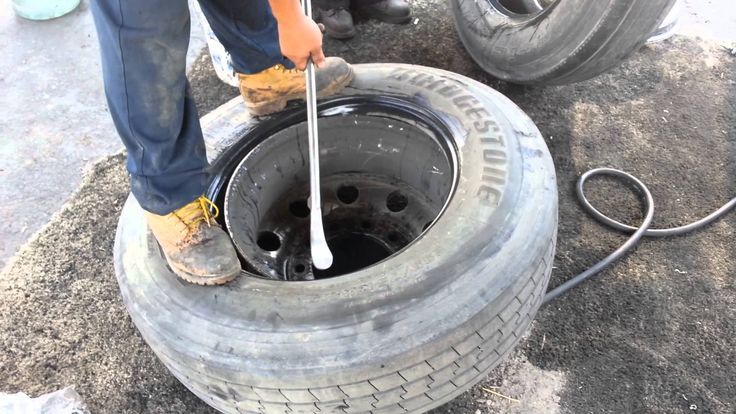
A reasonable question arises: is it worth putting tires with a higher maximum load or speed than the manufacturer recommends - so to speak, with a margin? For what purpose. If you often drive on bad roads, then tires with a high load index have a better chance of surviving the daily battle with pits than stock tires. But better handling or more efficient braking due to a high speed index cannot be achieved - they are not connected in any way. But the comfort and smoothness of the ride on stiffer high-speed tires will suffer significantly. If you drive around the city in civilian modes, then there is no point in buying high-speed tires with a truck load capacity - just stick to the recommended values.
Tire release date
As with most products, car tires are marked with the release date. Motorists often forget this when choosing wheels, although the age of the rubber is one of the key factors. Over the years, rubber dries out, losing elasticity, and outwardly this may not manifest itself in any way. After only 5 years of storage in a warehouse, a tire that has not even been ridden no longer fully corresponds to the parameters declared once. Therefore, the date of manufacture of the tire should be looked first of all - the fresher, the better.
After only 5 years of storage in a warehouse, a tire that has not even been ridden no longer fully corresponds to the parameters declared once. Therefore, the date of manufacture of the tire should be looked first of all - the fresher, the better.
The date of manufacture is printed on the sidewall of the tire in a separate oval box. Until 2000, a three-character code was used, but now these "walking dead" are no longer to be found. Since 2000, manufacturers have been marking tires with a four-digit code. The first two digits are the week of manufacture, the last two are the year. For example, a tire marked 1411 was produced in week 14 (i.e. April) of 2011 and is no longer worth driving today.
Tread wear indicators
All tires have TWI (Tread Wear Indicator) wear indicators - special jumpers in the tread grooves. To facilitate their search, symbols are applied to the sidewall of the tire indicating the location of the indicators: small triangles or arrows, sometimes with the inscription TWI, sometimes without.
Keep in mind that the TWI indicator shows critical tread wear, not "50% wear" as used tire salesmen like to say. Once the rubber has worn down to the indicator, it's time to buy new tires. On winter tires, the indicators are located higher than on summer tires, since their allowable wear is noticeably less.
Run Flat Tires
Some tires have additional features, such as Run Flat technology, which allows you to run on flat tires. Reinforced sidewalls prevent the disc from damaging the tire: you can drive 100 km on the “rims” – it’s enough for a tire fitting. For many modern cars that do not have a spare tire, Run Flat tires are standard equipment.
The designation of Run Flat tires varies from manufacturer to manufacturer. Some brands label their tires RFT (Run Flat Tires), others ROF (Run On Flat), others just RF. More to come: RSC, ZP, ZPS, DSST, SSR, HRS, XRP, TRF, PAX, MOE, AOE are all run flat tire options. "Please, slow down, I'm recording!" By the way, there is an international symbol Run Flat, similar to a crawling snail, but almost none of the manufacturers use it.
Tire mounting symbols
But not everything with tires is so complicated and confusing. For example, rubber with a directional or asymmetric tread pattern must have symbols for proper installation. This is a service label for tire shop employees - people who work with tires on a daily basis. And here it is generally accepted and intuitive!
A directional tire, in addition to the tread pattern directed forward, is issued by the inscription Rotation (rotation) on the sidewall and an arrow pointer. It indicates in which direction the wheel should rotate when the car moves forward. And on tires with an asymmetric tread there are inscriptions Outside (outer side) and Inside (inner side) - this is how you need to put rubber on the disc. As you can see, it's hard to go wrong.
However, nothing is impossible for roadside tire shops, and incorrectly fitted tires are sometimes found. A counter-rotating wheel loses efficiency and introduces an imbalance in the behavior of the machine.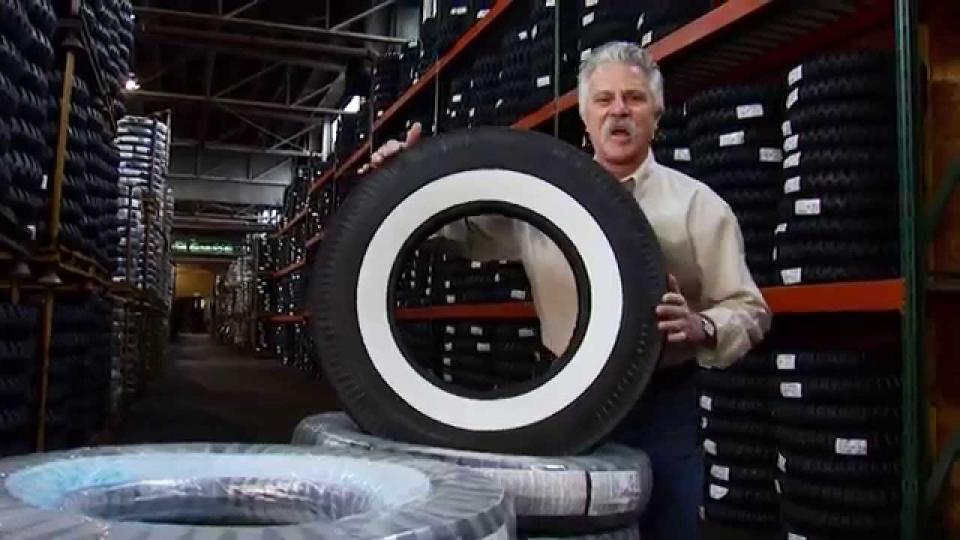 Be sure to check the correct installation of the tires according to the mounting symbols on the sidewalls.
Be sure to check the correct installation of the tires according to the mounting symbols on the sidewalls.
We hope that the tire designations have become a little clearer for you. Happy decryption!
www.adv.rbc.ru
www.adv.rbc.ru
www.adv.rbc.ru
Autonews
TV channel
Newspaper
Pro
Investments
+
New economy
Trends
Real estate
Sport
Style
National projects
City
Crypto
Debating club
Research
Credit ratings
Franchises
Conferences
Special projects St. Petersburg
Petersburg
Conferences St. Petersburg
Special projects
Checking counterparties
Library
Podcasts
ESG index
Politics
Economy
Business
Technology and media
Finance
RBC CompanyRBC Life
www.adv.rbc.ru
Photo: Shutterstock
www.adv.rbc.ru
See also
Numbers and letters on a car tire provide all the necessary information about it. True, it is not easy to read them - here, even in the designation of one parameter, several measurement systems can be used simultaneously.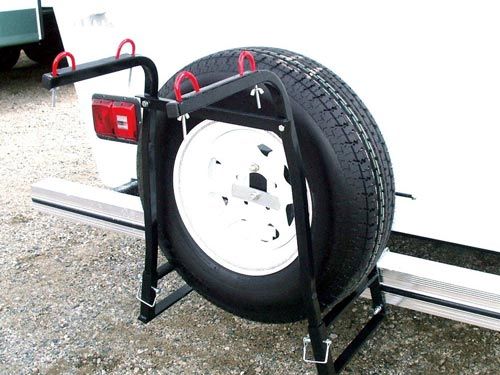 In addition, many values are expressed in special indices. We decipher all important labels for the buyer.
In addition, many values are expressed in special indices. We decipher all important labels for the buyer.
www.adv.rbc.ru
A tire label is information about tire properties printed on the outer rim. This is a huge amount of useful information. Here are the parameters of the tire that can be read from it itself:
The size designation is written in the form XXX/XX R XX. For example 225/65 R17.
The first three digits are the tire width in millimetres.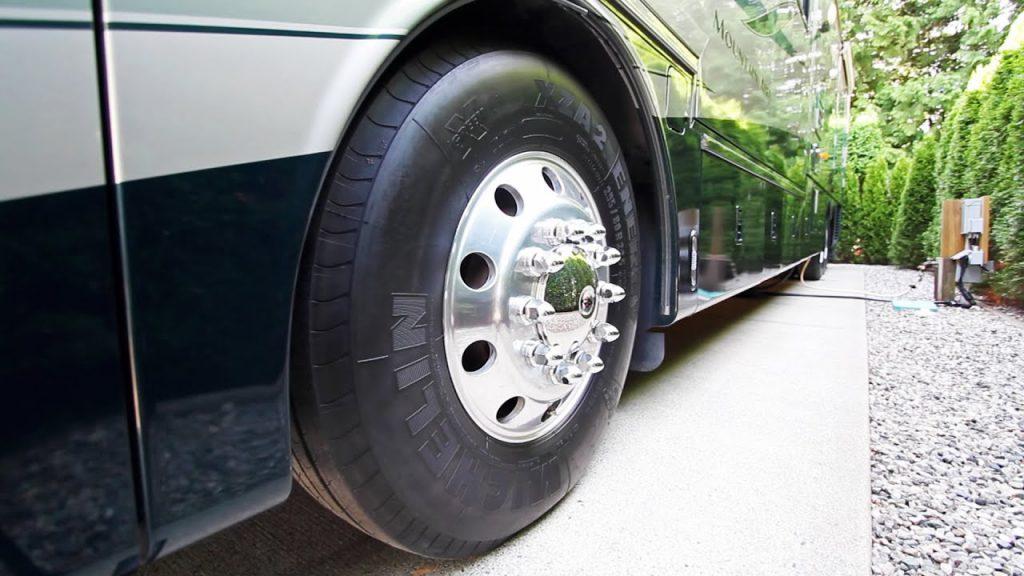 In our case - 225 mm.
In our case - 225 mm.
The second digit is the height, but not in millimeters, but as a percentage of the width. In our case, its height is 146.25 mm (225 * 0.65).
The third number after R is the outside diameter of the wheel or the inside diameter of the tire in inches. In our case, this is 17 inches or 43.18 cm. Do not confuse - this is the radius, not the diameter. The letter R itself stands for the radial design of the tire, which confuses many. Sometimes Radial can be written separately on the bus - the meaning is the same. In addition to the radial, there is also a diagonal design (D), but these are not found today.
Two numbers and a letter immediately follow the size. These are the codes for the load capacity and speed limit of the tire.
Two digits - capacity or load index. This is a complex system of values, in which the larger the number, the greater the load, but the step size between the values is not constant.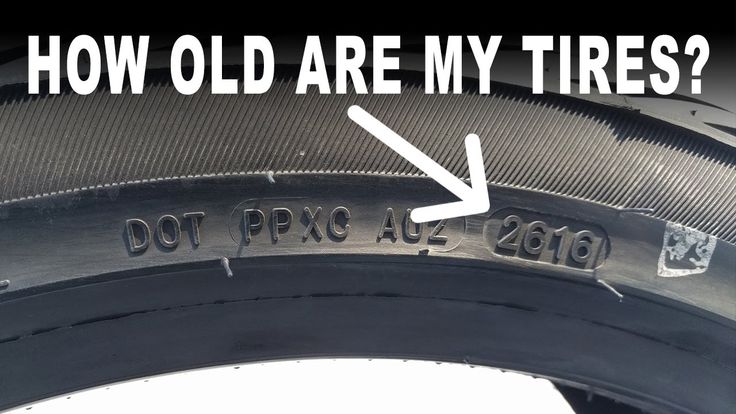 Therefore, it is easier to just know the most common of them:
Therefore, it is easier to just know the most common of them:
The index value is the load on each wheel separately. To calculate the total load capacity, multiply by 4.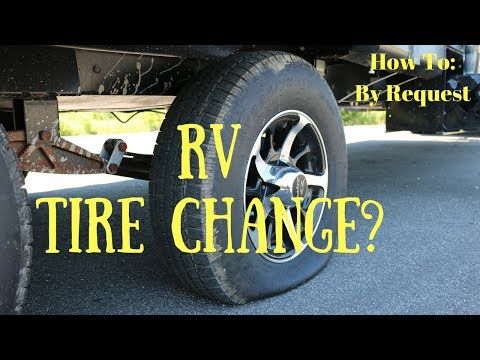 This value can also be written elsewhere in a simpler form: Max load - xxx kg.
This value can also be written elsewhere in a simpler form: Max load - xxx kg.
Photo: Shutterstock
The letter after the two digits of the load index is the index of the maximum speed for which the tire is designed. It starts with A, but the values relevant for modern machines start from the second half of the Latin alphabet:
This is not the limit, but the maximum "comfortable" value. In exceptional cases, you can even exceed it by 20-30%, but it is better to avoid this.
Another key parameter is the timing of the tire. Usually it is indicated in a rounded rectangle, but may be without a frame. The first two digits are the week, and the second two are the year.
Usually it is indicated in a rounded rectangle, but may be without a frame. The first two digits are the week, and the second two are the year.
Also, three more parameters are usually indicated on the tire - wear resistance margin, grip quality class and temperature index.
The wear index is denoted by the word treadwear. Its unit is 480 km. Multiply the number next to that word by that value. If treadwear is 400, it means that under test conditions at the test site, such a tire has worn out after driving 192,000 km. Also, this parameter can be designated separately as the abbreviation TWI.
Traction is a measure of how well a tire grips on wet road surfaces. It has values from AA - the best level, to CC - the worst. Tires for regular passenger cars usually have class A, and the highest class is for sports and racing.
Temperature is the tire's ability to withstand heat when driving at a certain speed. There are three values here:
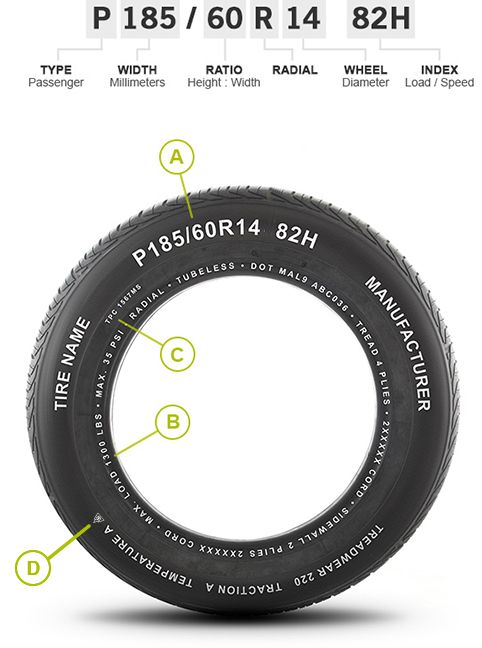
Tires of modern passenger cars most often have this index value - A.
Photo: Shutterstock
The letter E with a number indicates that the tire complies with the rules of the European Tire Standards Association (ETRTO) and has a corresponding certificate . The number indicates the country that issued it - but this does not matter, since the ETRTO requirements are the same. In this case, the tire can be produced anywhere.
The weather conditions in which this tire is allowed to be used are also usually indicated:
Winter tires must have a first, second or third designation.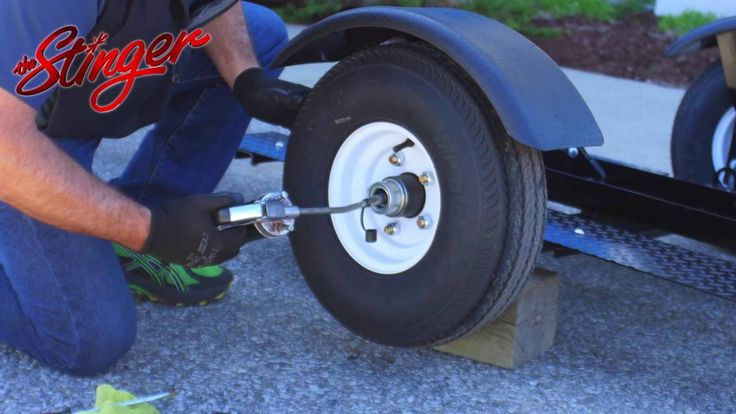
On some tires you can find the designation of the type of car for which they are intended:
In addition, the tire may be marked:
